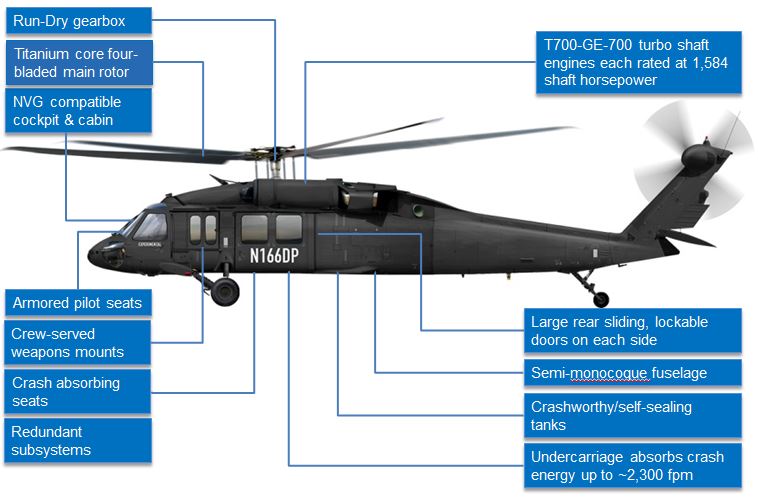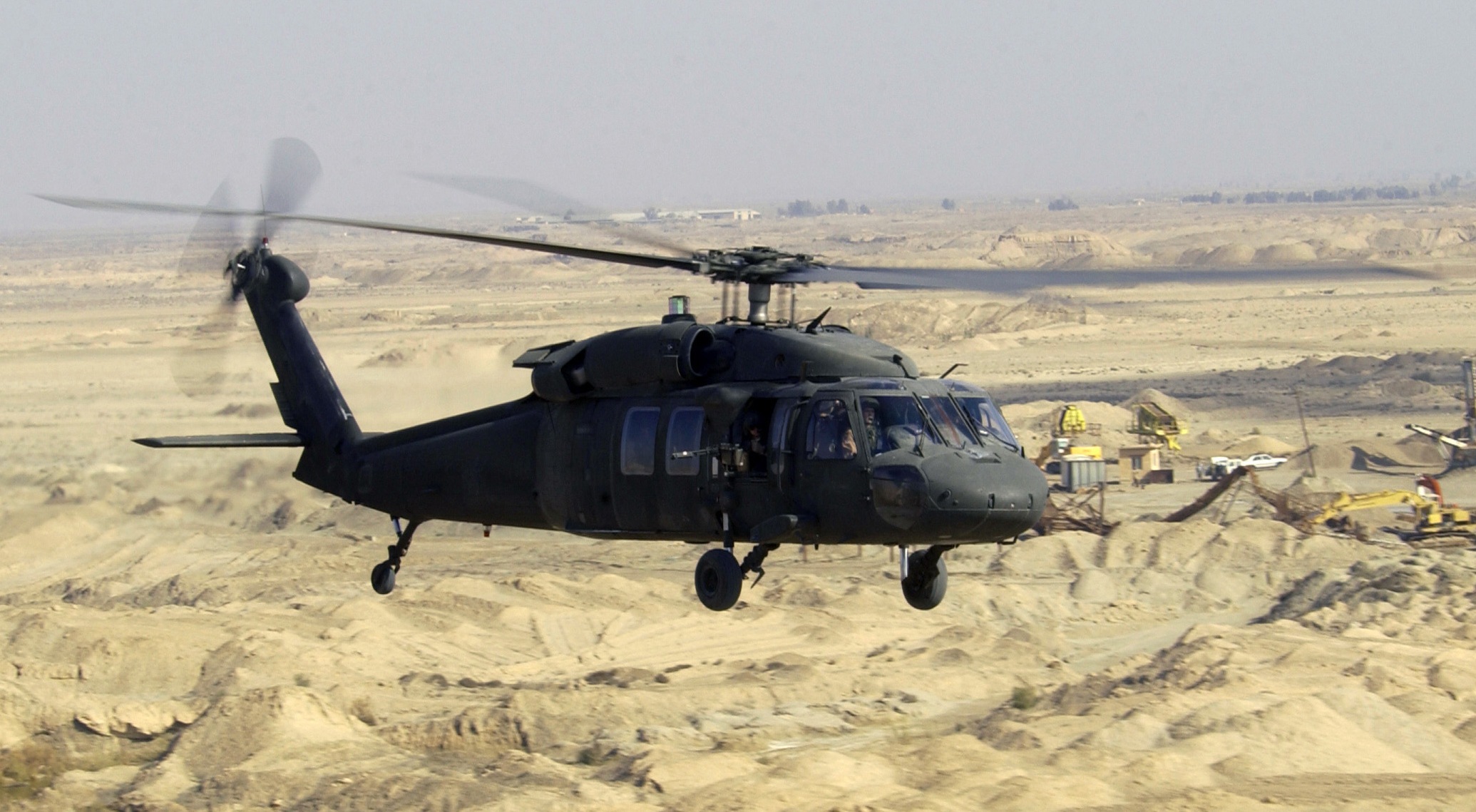What Makes the UH 60 Helicopter a Secret Property for Tactical Airlift Workflow
UH-60: Innovations in Modern Helicopter Design
The UH-60 helicopter stands as a criteria in modern air travel, showcasing substantial developments in layout and innovation that provide to the developing demands of armed forces operations. As we check out the development and key innovations of the UH-60, it becomes essential to take into consideration exactly how these growths influence not only existing applications but also the future landscape of helicopter style.

Advancement of the UH-60
The advancement of the UH-60 Black Hawk helicopter represents a considerable milestone in aerospace design and armed forces aviation. Introduced in the late 1970s, the UH-60 was made by Sikorsky Aircraft to meet the USA Military's requirement for a versatile energy helicopter efficient in carrying out a variety of goals. Its style emphasized resilience, rate, and ability to move, setting brand-new standards for functional performance.
The UH-60 includes a distinctive four-blade blades system, which enhances lift and security, allowing it to run successfully in varied settings. Its airframe is built from advanced composite materials, adding to a decrease in weight while preserving architectural stability. The helicopter's layout also integrates better aerodynamics, which improves gas efficiency and boosts array.
Over the years, the Black Hawk has undertaken numerous upgrades to enhance its abilities, consisting of boosted engines, advanced flight control systems, and modular systems for simple upkeep and flexibility. The helicopter's ability to carry out objectives varying from army transportation to clinical evacuation has strengthened its duty as a foundation of U.S. military operations. The UH-60 Black Hawk stays an archetype of exactly how technology in helicopter layout can considerably affect armed forces efficiency and functional adaptability.
Advanced Avionics Solutions
Improvements in avionics systems have transformed the abilities of contemporary helicopters like the UH-60 Black Hawk, improving operational efficiency and situational understanding (UH 60). The combination of advanced avionics enables for enhanced navigation, communication, and flight management, making the UH-60 a lot more versatile in varied goal accounts
Among the vital features is the advanced digital cockpit, which employs multifunction screens that supply real-time information, ensuring pilots have immediate access to crucial flight information. This streamlining of information minimizes pilot workload and boosts decision-making procedures throughout facility procedures. Furthermore, the unification of general practitioner and inertial navigating systems enables accurate positioning and course preparation, boosting objective implementation in difficult settings.
Furthermore, advanced avionics systems boost interaction abilities via safe and secure information web links and voice interaction systems, enabling smooth sychronisation with ground forces and other airplane. The assimilation of automated trip control systems additionally adds to boosted security and control, especially in unfavorable weather or throughout low-altitude maneuvers.
Engine and Performance Enhancements
Engine efficiency in contemporary helicopters has taken a substantial leap ahead, driven by developments that boost reliability, power, and effectiveness. At the center of these advancements is the adoption of even more effective turboshaft engines, especially those using sophisticated products and modern technologies that enable higher temperature level resistances and enhanced thrust capabilities. The UH-60 Black Hawk, as an example, uses the T700-GE-701C engine, which includes a dual-channel, full-authority digital engine control system. This system boosts performance while maximizing gas consumption and lowering upkeep demands.
In addition, the assimilation of engine wellness surveillance systems enables real-time diagnostics and anticipating upkeep, substantially enhancing functional dependability. These systems not only alert crews to potential issues before they become crucial but also facilitate more efficient maintenance scheduling, thus decreasing downtime.

Products and Structural Innovations
Recent advancements in products and structural style have actually revolutionized contemporary helicopter construction, improving both efficiency and resilience. The introduction of innovative composite materials, such as carbon fiber strengthened polymers, has actually considerably minimized weight while keeping architectural honesty. This change not just boosts gas performance yet also increases payload capacity, allowing helicopters like the UH-60 to perform more varied goals.
Additionally, innovations in light weight aluminum alloys and titanium elements have contributed to enhanced resistance to deterioration and tiredness, prolonging the lifespan of vital airframe components. The calculated use these materials has actually caused a reduction in upkeep demands and improved overall functional readiness.

In addition, the combination of computer-aided design (CAD) and additive production innovations has made it possible for much more lightweight structures and complicated geometries, enhancing the aerodynamic efficiency of helicopter styles. These improvements help with quick prototyping and production, permitting makers to react quickly to advancing objective demands.
Security and Survivability Features
Safety and security and survivability attributes in contemporary helicopter design have actually come to be critical, reflecting the boosting needs for mission performance in challenging atmospheres. The UH-60 Black Hawk, a notable example, incorporates sophisticated technologies to enhance team and passenger protection. One of one of the most important improvements is the incorporation of crashworthy gas systems developed to reduce the danger of fire throughout influence. In addition, the airframe is created with reinforced materials that dissipate and absorb energy, further safeguarding residents in the event of an accident.
The helicopter also uses a ballistic defense system, which consists of armored team seats and important systems protecting, decreasing vulnerability to small arms fire and shrapnel. Boosted situational recognition is attained with advanced avionics and sensing unit modern technologies, enabling pilots to discover and avoid threats properly.
In addition, about his the assimilation of redundancy in important systems-- such as double engines and multiple trip control networks-- guarantees continued procedure even if one system fails. The UH-60 is outfitted with innovative emergency flotation tools, improving survivability in water landings. Jointly, these functions not only enhance the safety of employees however likewise enhance goal success prices in hostile settings, showing the commitment to excellence in helicopter style.
Conclusion
The UH-60 helicopter stands for a significant innovation in contemporary aeronautics technology, including ingenious products, advanced avionics, and durable security features. Its development reflects a commitment to boosting performance and functional effectiveness while ensuring pilot and crew survivability. The integration of light-weight compounds and advanced navigating systems highlights the helicopter's adaptability in different military goals. Overall, the UH-60 functions as a standard for future developments in helicopter style, embodying durability and versatility in contemporary armed forces operations.
The UH-60 helicopter stands as a standard in modern-day aviation, showcasing significant innovations in design and technology that cater to the developing demands of military operations. As we explore the evolution and key developments of the UH-60, it ends up being necessary to think about exactly how these advancements influence not just existing applications yet additionally the future landscape of helicopter style.
Introduced in the late 1970s, the UH-60 was developed by Sikorsky Aircraft to fulfill the United States Military's requirement for a flexible energy helicopter capable of performing a variety of goals. The UH-60 Black Hawk stays a prime example of how technology in helicopter layout can substantially affect military performance and operational flexibility.
On the whole, the UH-60 offers as a benchmark for additional info future growths in helicopter style, embodying strength and adaptability in contemporary army operations.